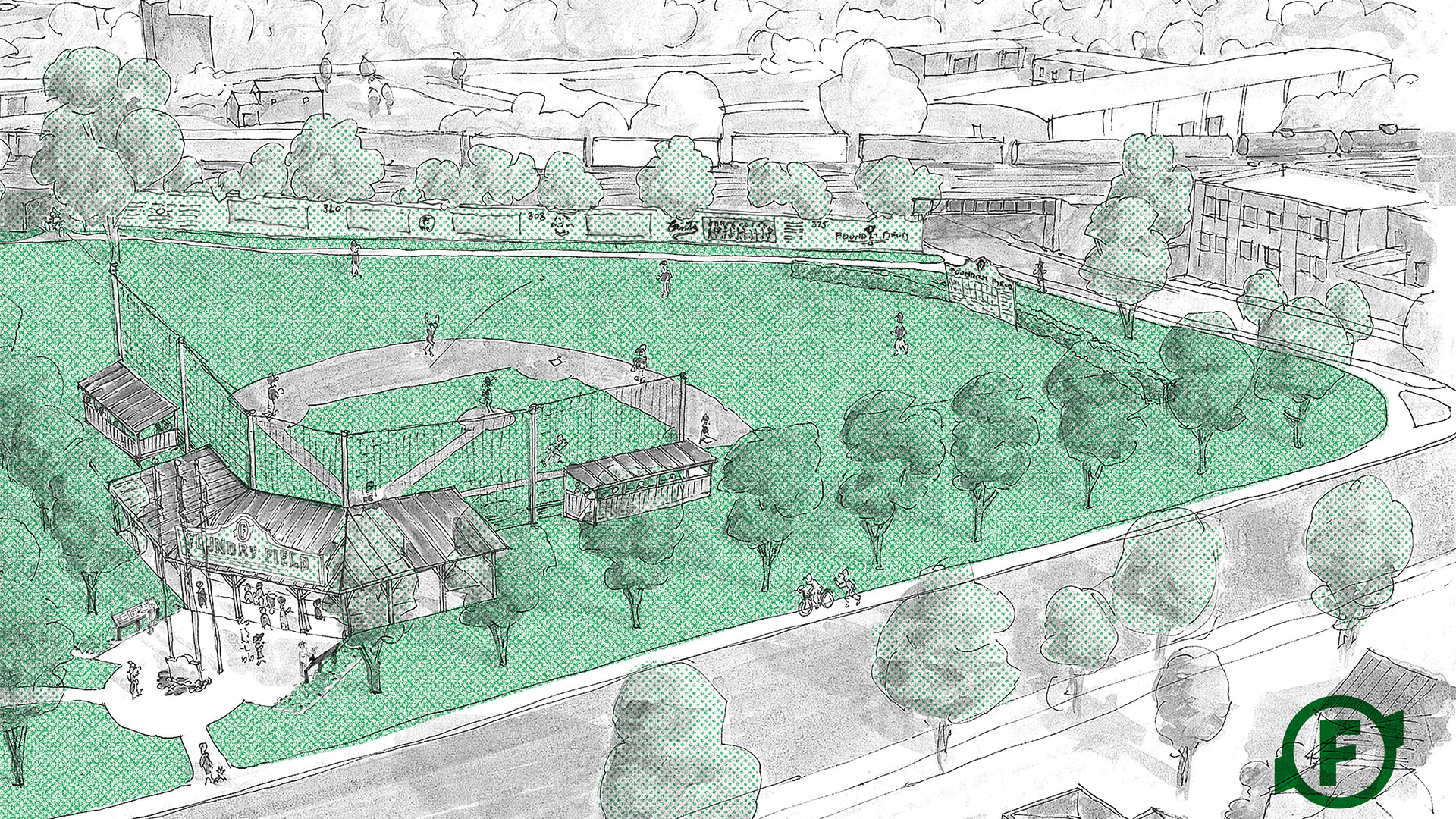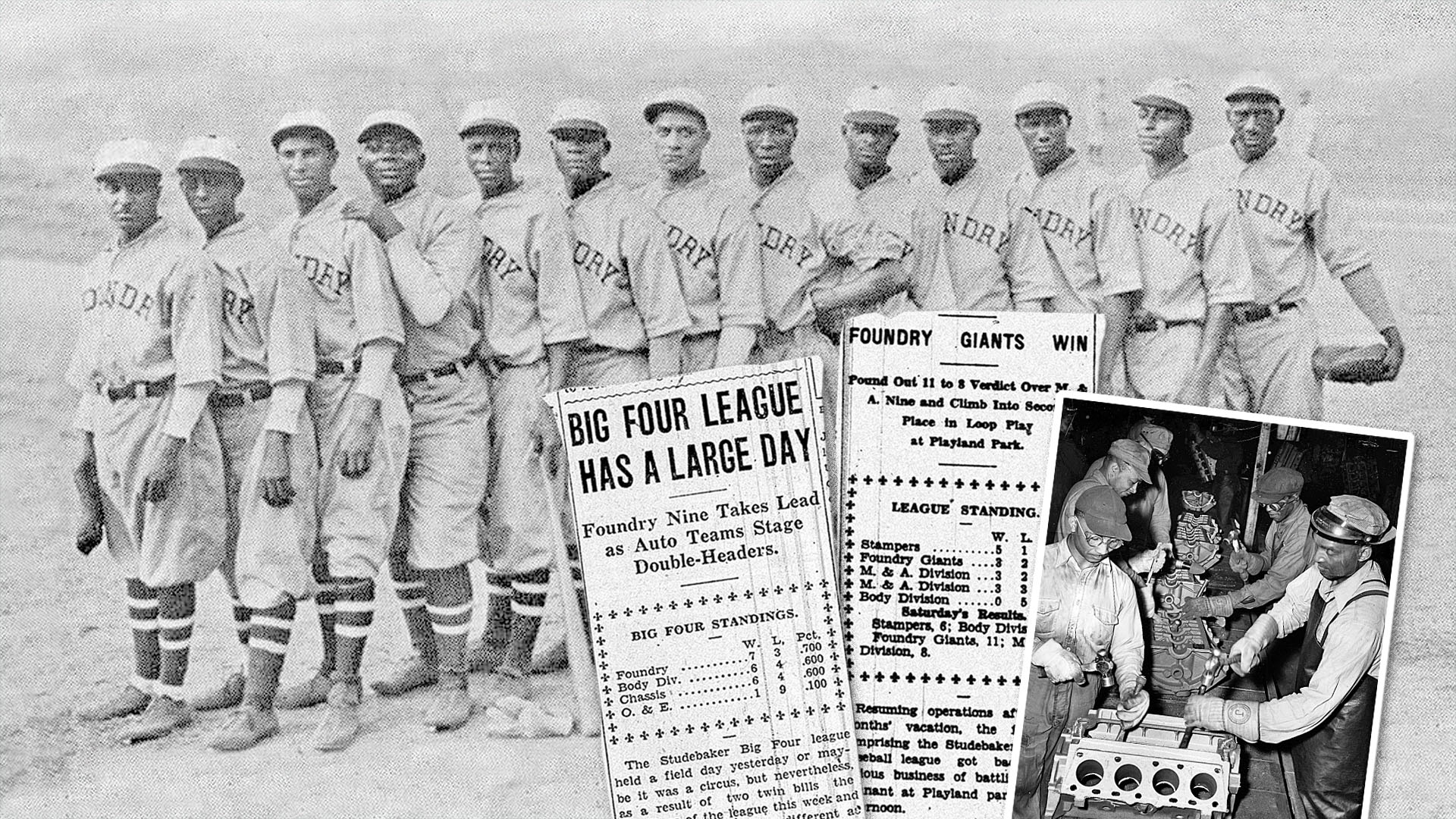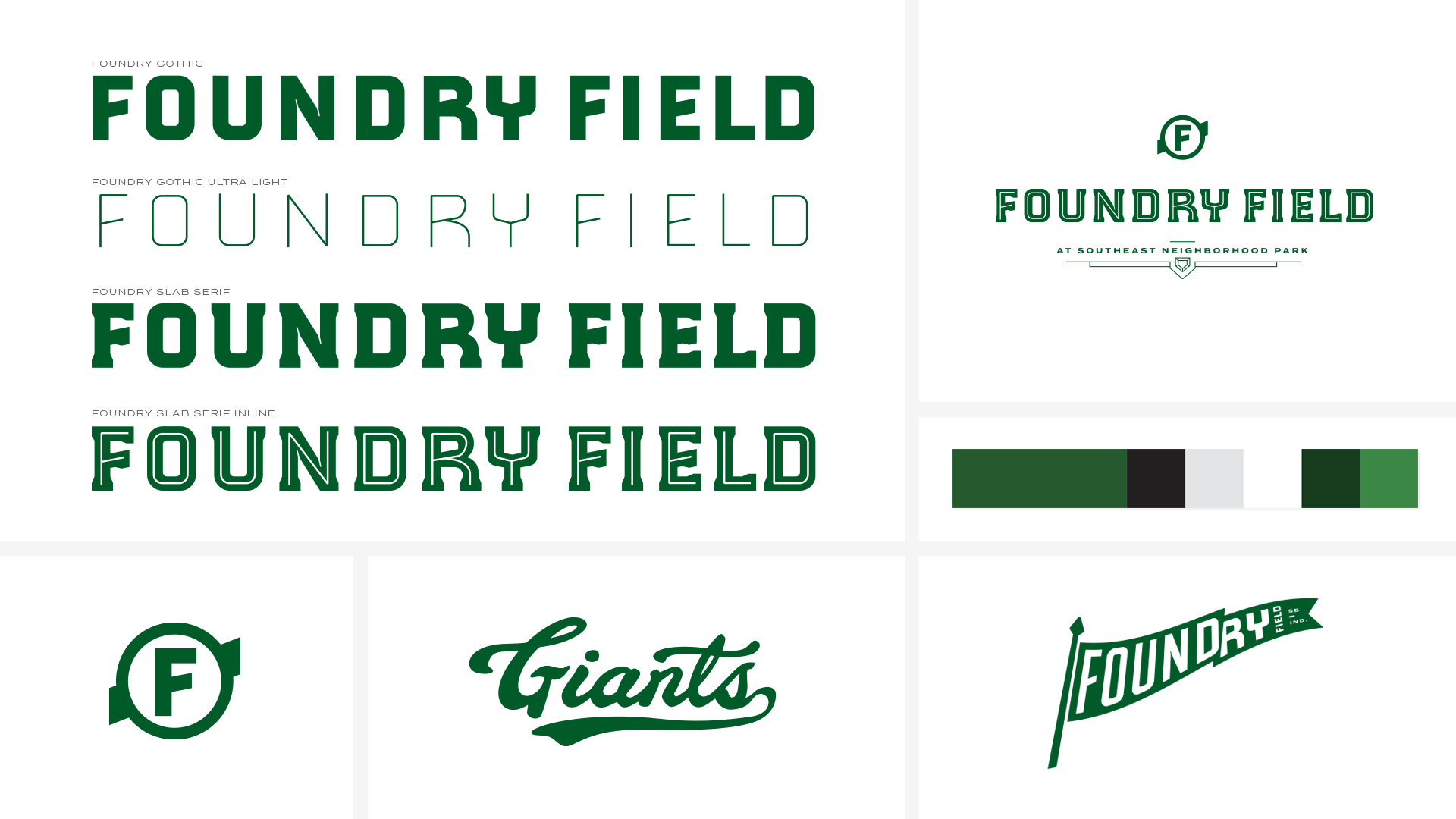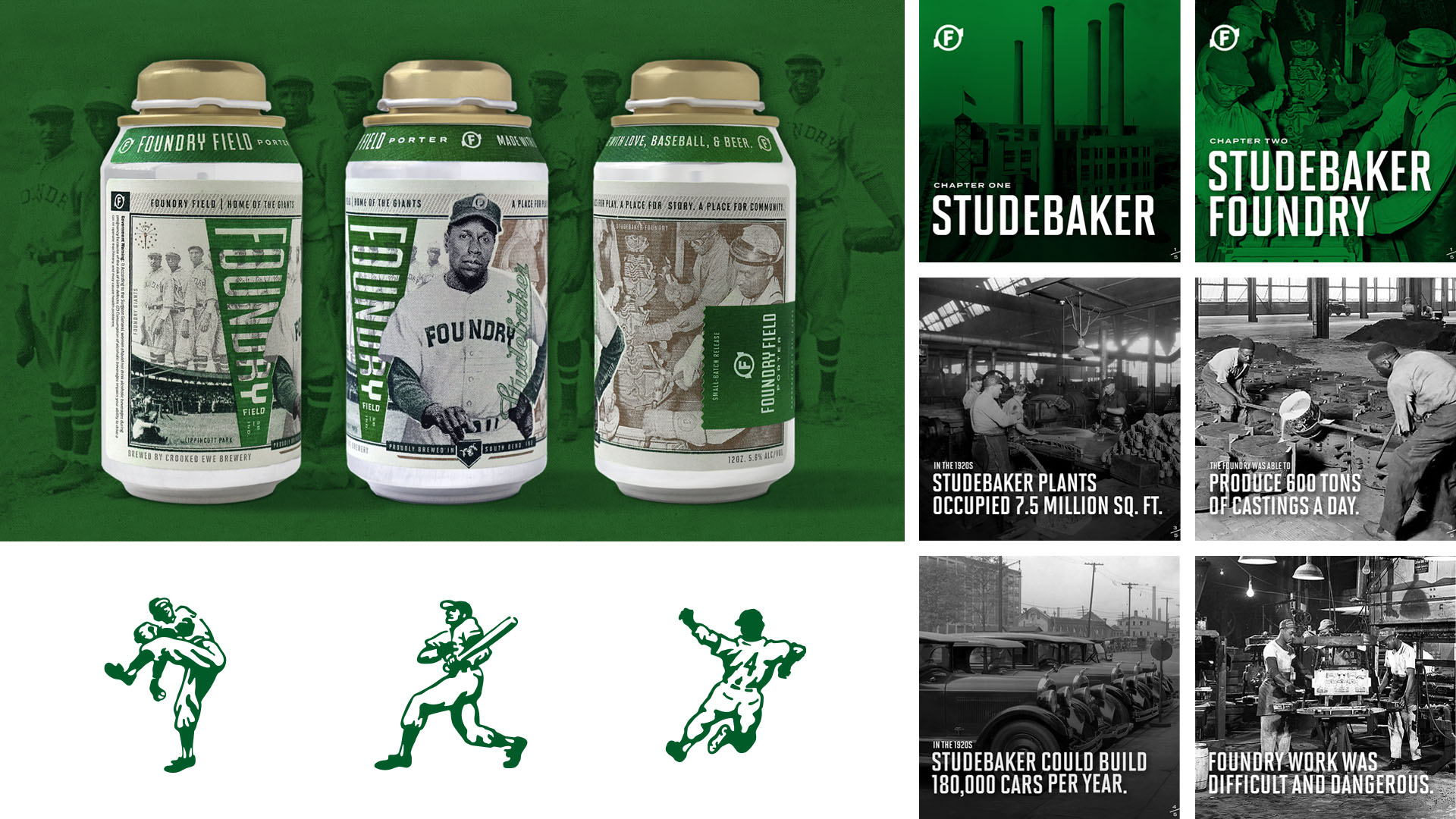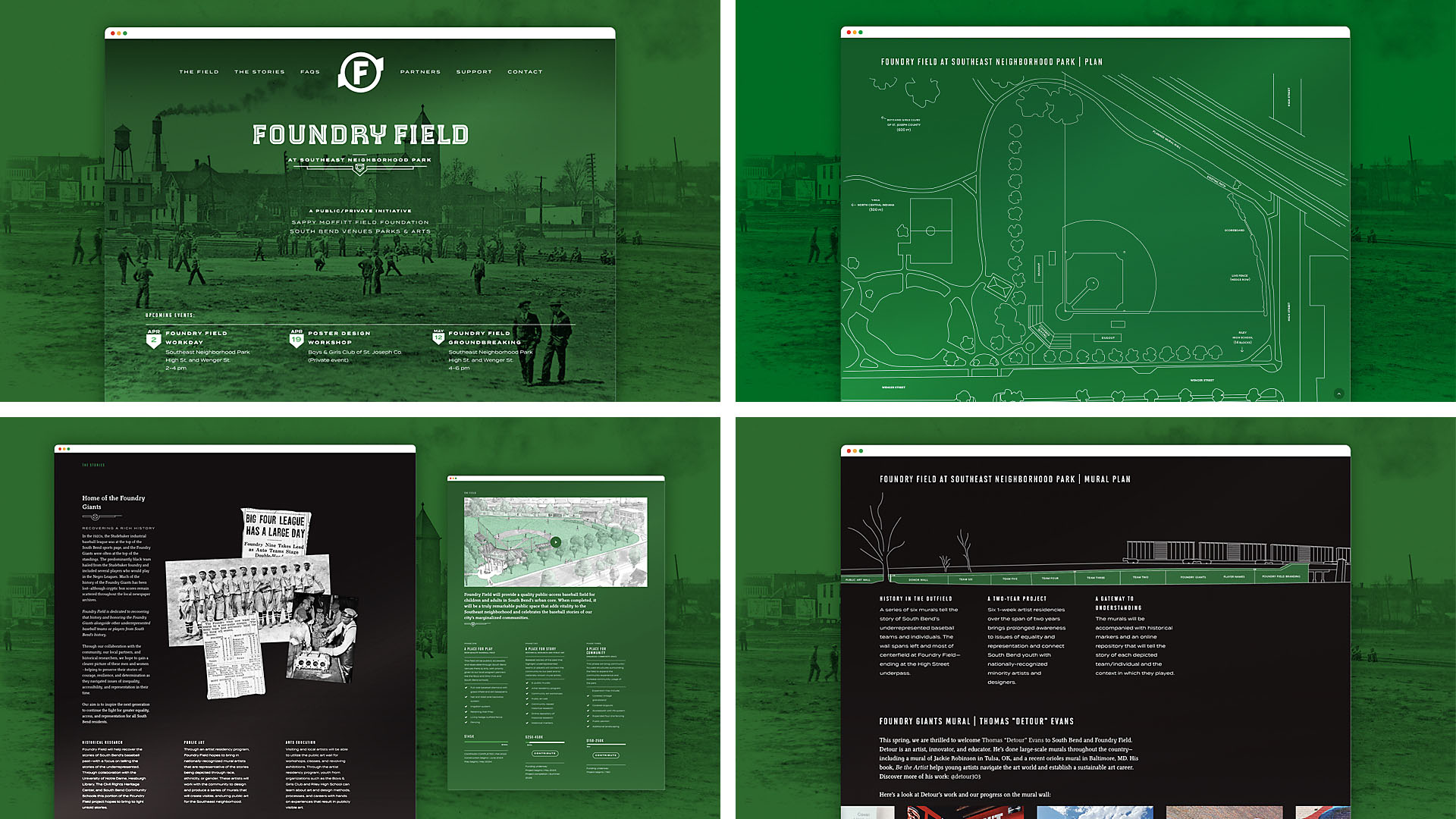Foundry Field: The Story of Race, Representation, Access, and Baseball in South Bend, Indiana
Foundry Field will become one of the few publicly accessible baseball fields in the urban core of South Bend, Indiana. The project has grown out of a collaboration between an adult recreational baseball league, the local neighborhood association, the nearby Boys & Girls Club, the Civil Rights Heritage Center, our public schools, and the city’s parks department.
Agency
Clinton Carlson Design, University of Notre Dame
Practice Area
Client
Foundry Field, Sappy Moffitt Field Foundation
Industry
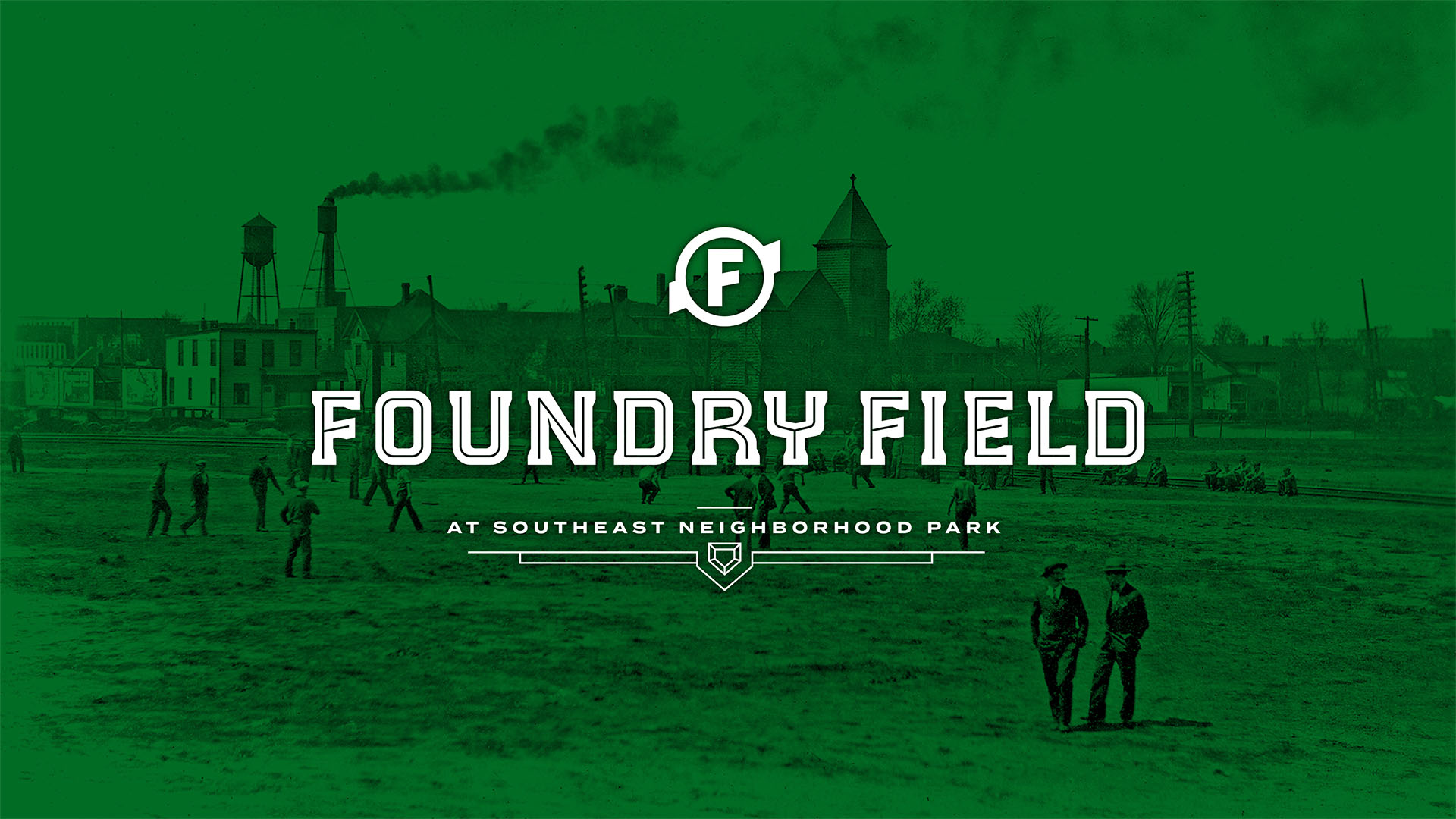
The Challenge
The challenge was to convey the vision for Foundry Field with only an empty plot of land and an idea. With limited budget we set out to create a compelling story that would resonate with our past, present, and future.
Project Vision
The vision for Foundry Field was to create an intergenerational space for community to gather around baseball and overlooked local history through public art and community workshops.
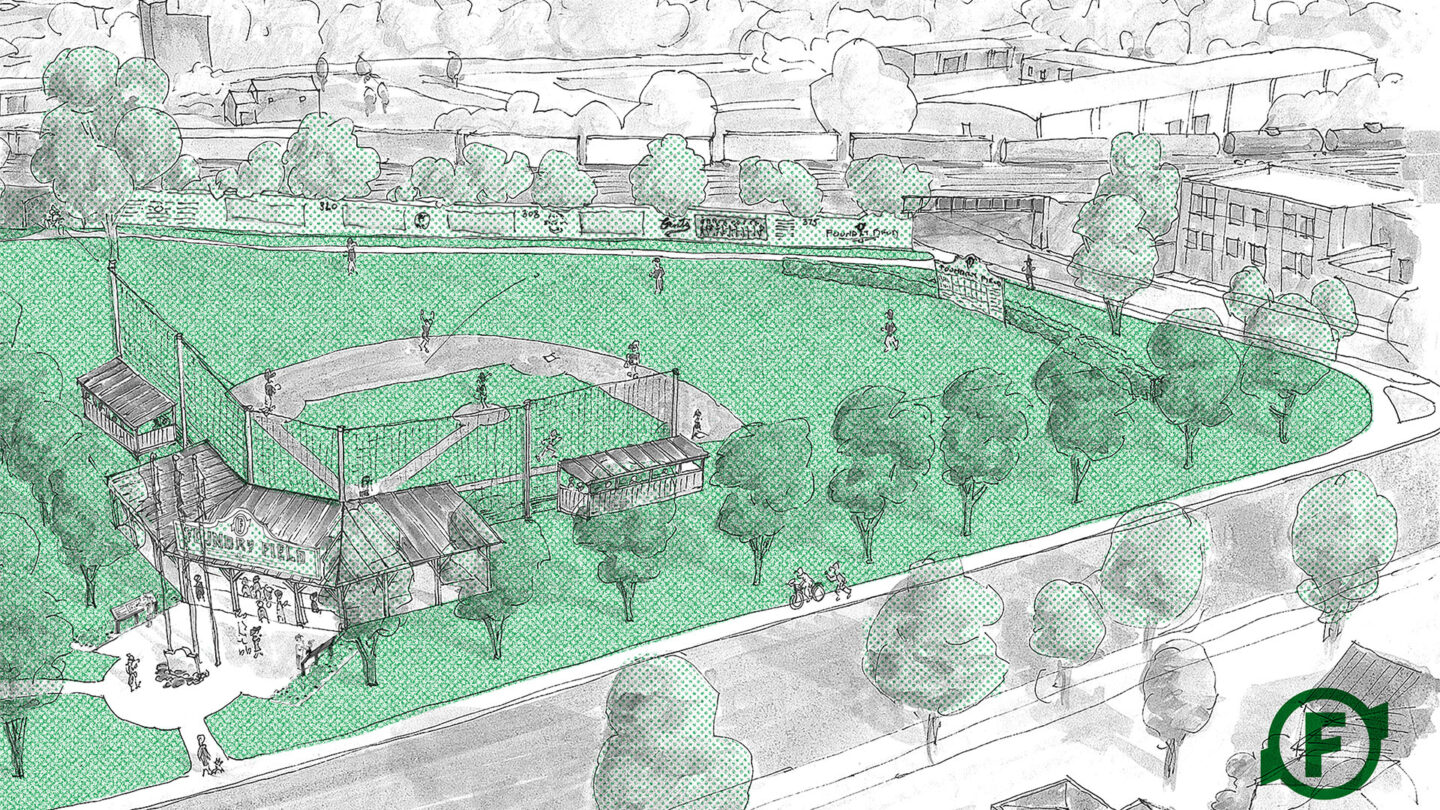
A vintage rendering of Foundry Field that depicts the completion of three phases.
Kevin Buccellato (architect), and Clinton Carlson (designer)
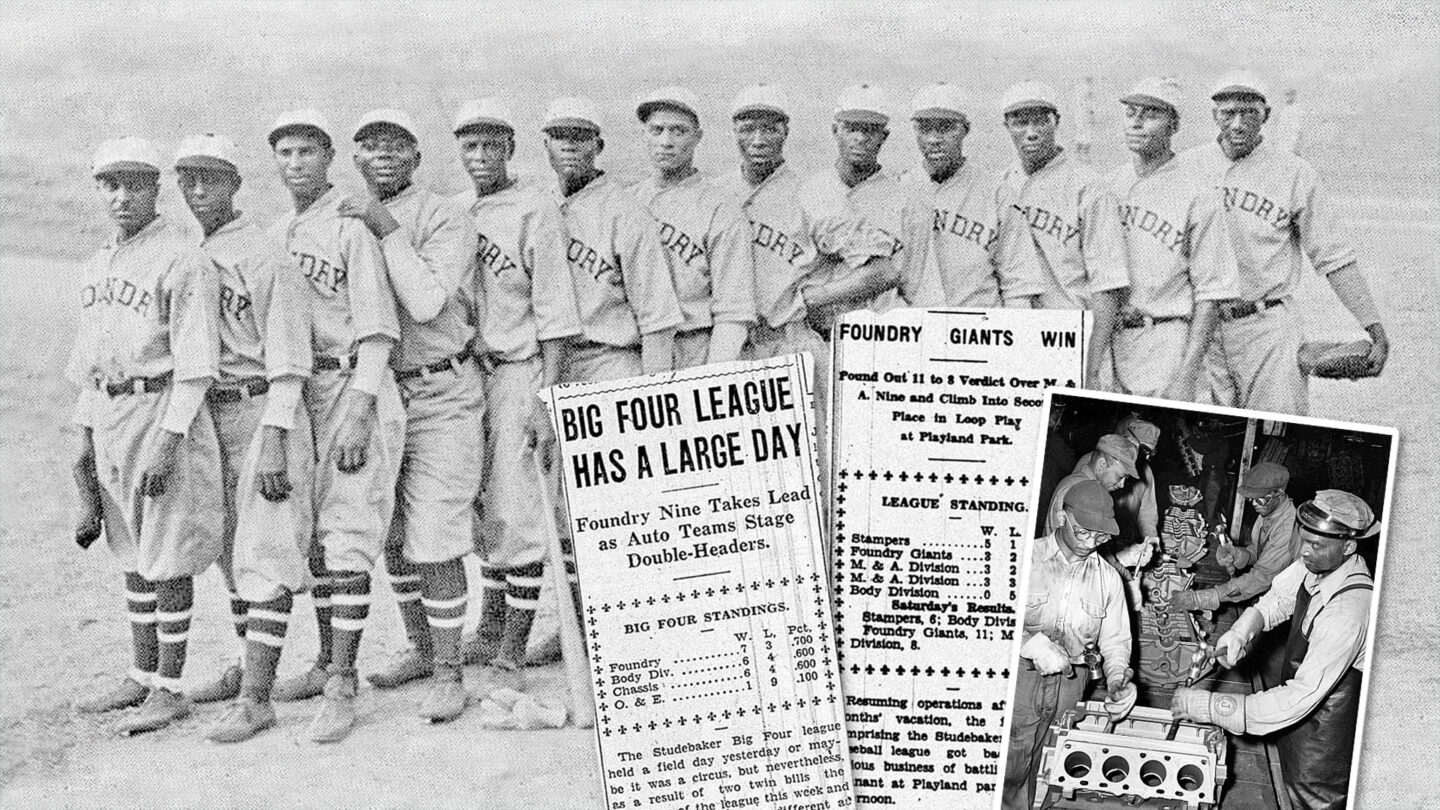
The only known image of the Foundry Giants in uniform with newspaper clippings and a photo of Stker foundry workers. These images and history helped guide the field project.
Unknown/Stker National Archives
Design + Execution
Historical research informed the design of a unified brand identity and materials that promoted the vision for Foundry Field. The design of community-activated design workshops gives youth the opportunity to learn about historic local leaders and contribute their art to the public space of Foundry Field. A visiting artist program transforms Foundry Field into a living museum that engages the local community and invests in an often overlooked neighborhood.
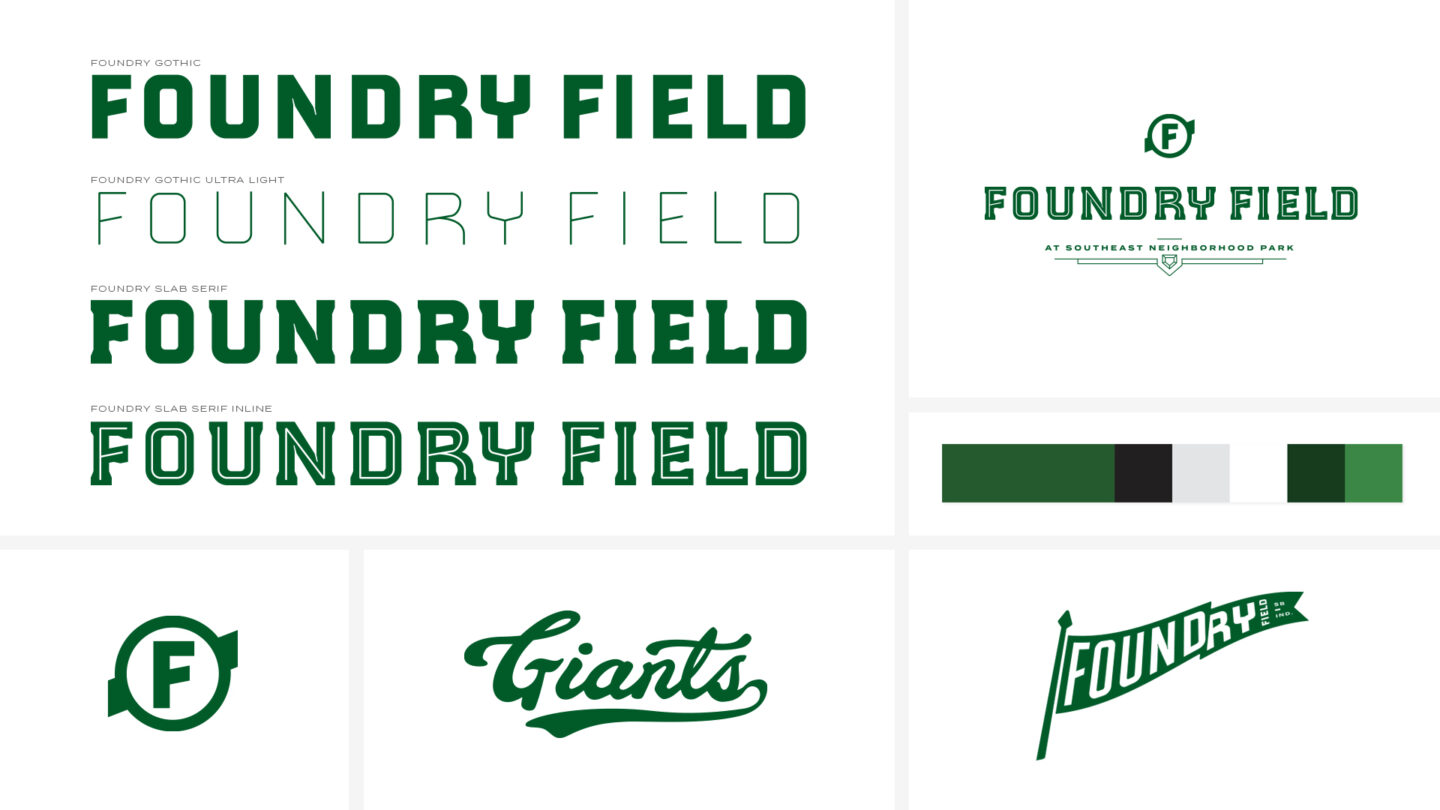
The Foundry Field brand system needed to create a cohesive brand that would develop recognition within the community.
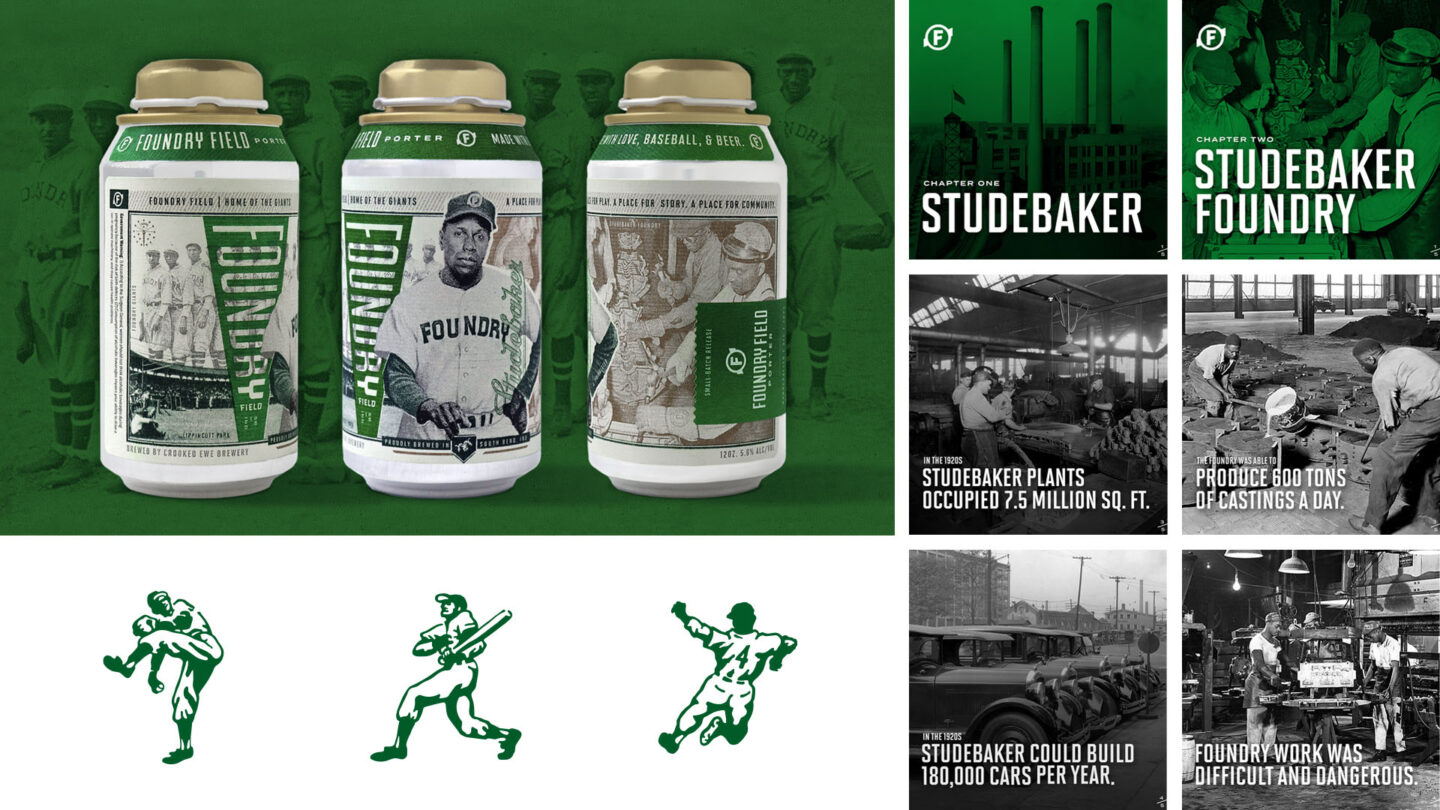
Promotional materials such as the small batch Foundry Field Porter, social media, and custom illustrations helped give Foundry Field greater visibility within the community.
Stker National Archives
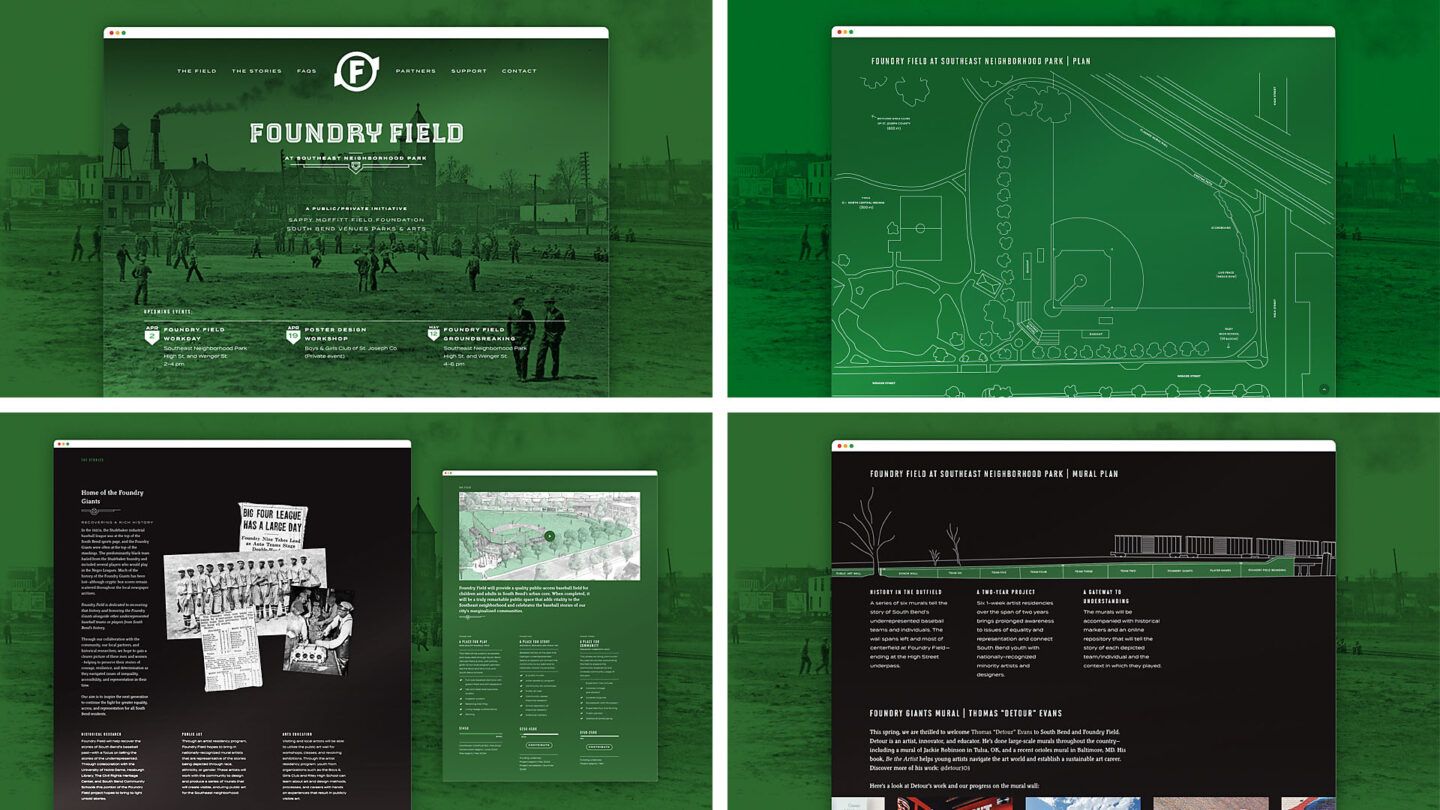
The Foundry Field website helped share the story of the project and gave viewers plans and elevations of key field components.
Stker National Archives
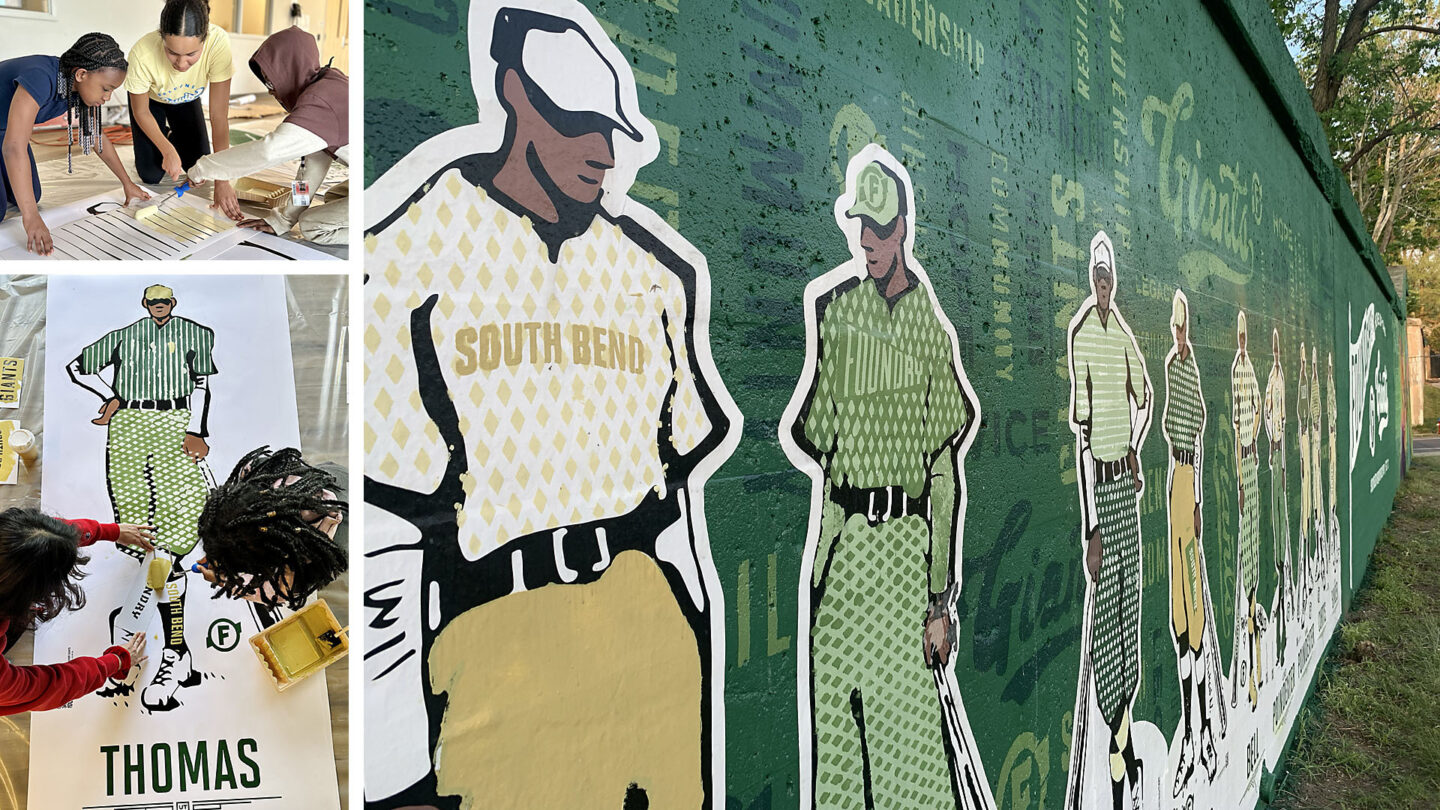
A community workshop with the Boys and Girls Club produced a mural depicting the Foundry Giants on the wall, giving neighborhood youth a greater sense of ownership in the project.
Lindahl Chase & Clinton Carlson

Nationally known mural artist, Thomas “Detour” Evans spent a week in South Bend, working with youth and completing the first mural at Foundry Field.
Clinton Carlson
Project Details
This project showcases the power of design to make things happen. In this case, such long overdue conversations were elevated, much needed funding was and continues to be raised, and hopefully soon the transformative community space will become a reality.
Historically America’s past time was exclusive to white athletes only, although baseball was universally regarded as desirable recreation. Negro leagues across the nation fought for recognition due to the undiscovered and ignored talent at all positions. This proposal put forward a strategy that pays homage to the legacy of the underrepresented, celebrates their achievements, and becomes a model for other locations across the nation that struggle with their past as well.
Design Team
Clinton Carlson (creative director, design)
Kiaya Jones (design)
Neve Harrison (design)
Kenny Garrett (design)
Taylor Li (design)
Catie Procyk (design)
Jennifer Santana (design)
Thomas “Detour” Evans (design)
Students from the Boys & Girls Club (design)
Students from the Riley High School (design)
Collaborators
Buccellato Design (architecture)
Clinton Carlson (producer, research, copywriting, producer, writing)
Michael Hebbeler (producer, research, copywriting, producer, writing)
Katie Walden (research)
Greg Bond (research)
Baseball and America students from the University of Notre Dame (research)
Kevin Buccellato (research)
Matthew Insley (research, copywriting)
Sean Kennedy (research, copywriting)
Nick Mainieri (research, copywriting)
Carrie Gates Jantzen (copywriting)
Ben Kruis (videographer, editor, producer)
Photo Credits
Clinton Carlson
Lindahl Chase
Katie Walden
Open Date
September 2024
